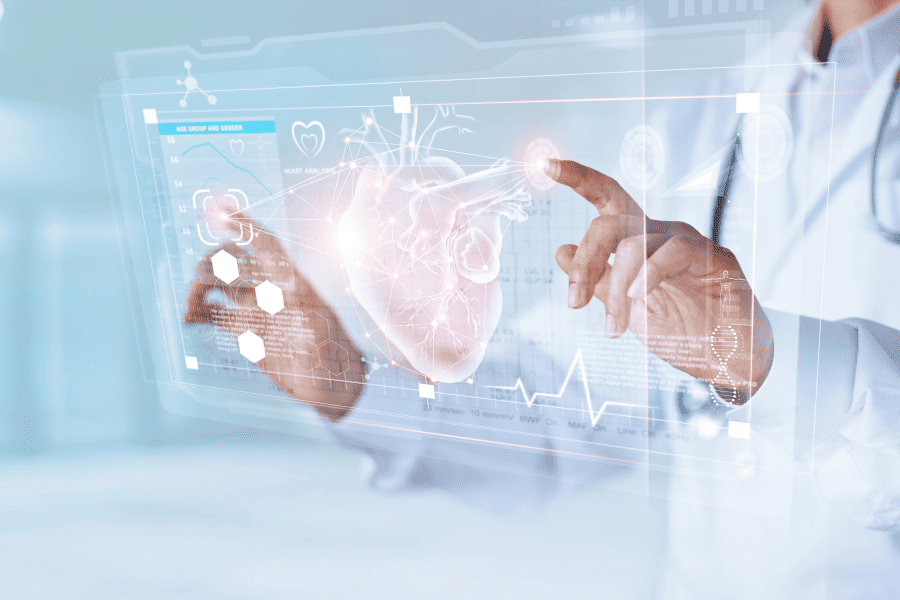Cardiac sarcoidosis, often overshadowed by more familiar cardiovascular diseases, presents a unique challenge to medical professionals worldwide due to its intricate nature and diverse manifestations.
Understanding Cardiac Sarcoidosis
Cardiac sarcoidosis is a subtype of systemic sarcoidosis, an inflammatory disease that often affects the lungs. However, when it targets the heart, the consequences can be particularly severe. It is characterized by the growth of granulomas, tiny clumps of inflammatory cells, within the heart tissue. These granulomas can affect the heart’s electrical system, muscle cells, and even blood vessels.
Detailed Insight into Cardiac Sarcoidosis
Sarcoidosis in general is characterized by the formation of granulomas, which are small lumps of immune cells, in various organs. When these granulomas form in the heart, the condition is specifically termed as cardiac sarcoidosis. The heart, being the body’s most vital organ, can be significantly impaired due to these granulomas, leading to disruptions in its normal function and rhythm.
The Veiled Symptoms
The clinical presentation of cardiac sarcoidosis can be highly variable, ranging from asymptomatic to severe heart-related symptoms. Some of the more common manifestations include:
- Arrhythmias: Irregular heartbeats due to electrical disruptions.
- Heart block: A delay or complete block in the transmission of heart signals.
- Shortness of breath: Due to compromised cardiac function.
- Chest pain: Resulting from the heart’s inability to meet the body’s oxygen needs.
- Swelling: Typically in the ankles, feet, or legs due to fluid retention.
- Palpitations: Sensation of rapid, fluttering, or pounding heartbeats.
- Fatigue: A common manifestation as the heart struggles to maintain its efficiency.
- Dizziness or fainting: Resulting from irregular heart rhythms or blocked electrical signals.
Peeling Back the Causes
While the exact cause of sarcoidosis remains a mystery, several hypotheses exist. The disease may result from an exaggerated immune response to certain substances, including bacteria, viruses, or chemicals. Genetic factors also appear to play a role, as sarcoidosis seems to cluster in families.
Risk Factors – Who’s at Risk?
Several factors can predispose an individual to develop cardiac sarcoidosis:
- Age: Most commonly diagnosed in people aged 20 to 50.
- Race: Black Americans are more likely to develop sarcoidosis and may experience more severe symptoms. Additionally, people of Scandinavian descent also show a higher predisposition.
- Family history: Having a family member with sarcoidosis can increase the risk.
How to Dodge the Bullet
Preventing cardiac sarcoidosis isn’t straightforward due to its multifactorial origins. However, being aware of the potential risk factors and adopting a heart-healthy lifestyle is beneficial. This includes:
- Regular health check-ups: Especially if there’s a family history.
- A balanced diet: Focusing on whole foods and cutting out processed items.
- Regular exercise: Cardiovascular exercises can strengthen the heart muscle.
- Avoiding infections: Regular handwashing, vaccinations, and general hygiene can help.
Timely Medical Intervention: When to See a Doctor
Due to the sneaky nature of cardiac sarcoidosis, recognizing when to seek medical intervention can be lifesaving:
- Persistent irregular heartbeats: This could signal an underlying electrical issue.
- Unexplained shortness of breath: Especially if accompanied by chest pain.
- Chronic fatigue: A sign that the heart is working overtime.
- Unexplained swelling: Often in the lower extremities.
- Any other unusual cardiovascular symptoms: Always better to be safe.
Deep Dive into Diagnosis and Treatment
- Advanced Imaging: MRI and PET scans can provide detailed images of the heart, aiding in diagnosis.
- Electrophysiological studies: These can map the heart’s electrical activity.
- Medications: Corticosteroids remain the mainstay of treatment. Additionally, anti-arrhythmic drugs might be prescribed for rhythm abnormalities.
- Devices: In advanced cases, pacemakers or defibrillators may be required to regulate the heart’s rhythm.
Further Insights into Cardiac Sarcoidosis
- Diagnostic Challenges: Diagnosing cardiac sarcoidosis can be complicated. It often requires a combination of tests, including electrocardiograms, MRIs, and sometimes even biopsies.
- Treatment Paradigm: Treatment often revolves around managing symptoms and preventing complications. This could involve medications like corticosteroids or even devices like pacemakers.
- The Research Horizon: Cardiac sarcoidosis is an active research field. Scientists are probing its molecular mechanisms, exploring new treatments, and developing better diagnostic tools.
In conclusion, Cardiac sarcoidosis, while elusive, is becoming better understood thanks to the relentless efforts of the medical and research communities. With early detection, appropriate management, and preventive measures, many patients can lead full, active lives.









